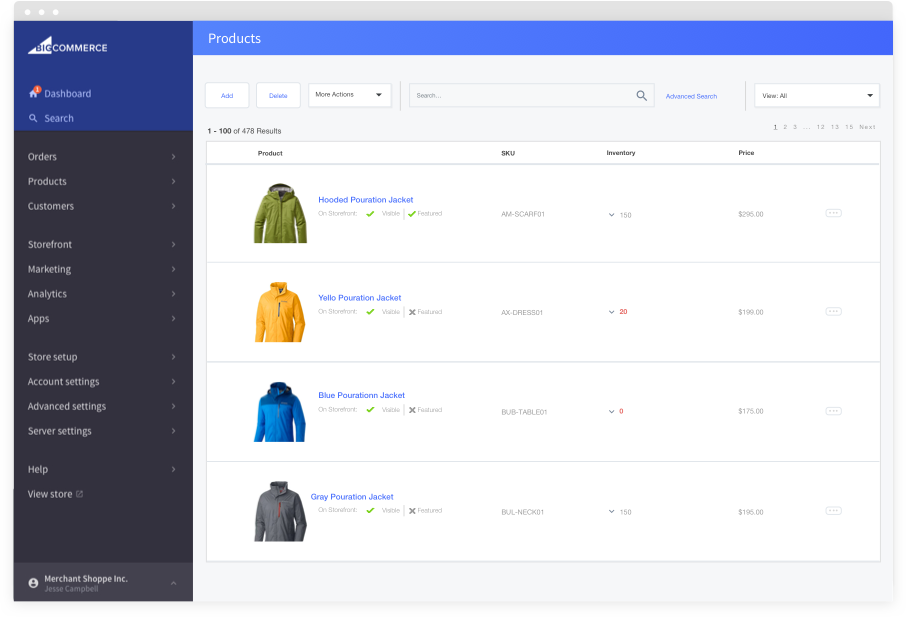The ecommerce industry has continuously changed years by years with the growth of a wide range of software. Those software include cloud, mobile, big data, the Internet of Things (IoT), social media, website and other technologies, which has changed customers’ online experience.
For the above reason, all businesses also have to constantly adapt to these changes not to left behind their competitors. To help you keep up with ecommerce trends, in this article, we will provide you with the basic information about one of the ecommerce technologies, APIs.
What are APIs and the benefits of APIs
APIs, or application programming interfaces, allows one web-based application (such as your ecommerce platform) to interact with another application.
APIs provide users with a new level of data sharing and connectivity with easy and seamless experiences. For example, Google Maps API, with this, developers can embed maps on web pages. Another example is Slack API, which allows teams to collaborate and stay on the same page no matter the application they’re on.
The benefits of APIs
APIs have a positive impact on enterprises’ profitability. According to a recent report of MuleSoft, in 2019, 25% of businesses revenues are generated by APIs according to organizations who leverage them.
APIs provide businesses the tool to integrate and connect people, places, systems, data, and algorithms. Through this way, entrepreneurs can share data and information, enable transactions, and leverage third-party algorithms. In addition, APIs make it easier for businesses to authenticate people and things. APIs also allow users to develop new products, services, and business models, which creates new users experiences.
According to Kristin R. Moyer, a vice president, and analyst at Gartner, “the API economy is an enabler for turning a business or organization into a platform. Platforms multiply value creation because they enable business ecosystems inside and outside of the enterprise to consummate matches among users and facilitate the creation and/or exchange of goods, services, and social currency so that all participants are able to capture value.”
APIs help you to facilitate the proper data orchestration process. They connect your ecommerce platform with numerous back-end and front-end systems, including:
- Enterprise resource planning (ERP).
- Product information management (PIM).
- Customer relationship management (CRM).
- Order management system (OMS).
- Warehouse management system (WMS).
- Point-of-sale (POS).
- Content management system (CMS).
- Digital experience platform (DXP).
By connecting with any or all these above systems, you can create a smooth and accurate flow of information, which is the factor deciding whether you can develop a loyal customer or lose them to a competitor.
You might also interested in: Shopify Unite 2019 Highlights
15 Ways to Leverage APIs
The following are 15 eCommerce API examples we give you. Through the list below, you can consider which ways are fit with your business and help you enhance your eCommerce site’s functionality and improve the customer experience.
1. Product information API
A product information API is a type of eCommerce API that allows retailers to extract product information from any shopping site or a global database of products. Product information includes product ID, product descriptions, full product titles, detailed product specs, product and brand images, pricing info, quantity-based discounts, etc.
2. Catalog API
A catalog eCommerce API helps retailers in creating, editing, and managing your product catalog. With APIs, you can update thousands of products within minutes and supports integration with other essential eCommerce systems.
An example is BigCommerce’s catalog API.

3. Login API
The login eCommerce API helps an online retail business to manage customer identities. It allows you to offer your customers the ability to log in to your eCommerce site using the systems they already use, such as Amazon, Facebook, Active Directory and OneLogin.
4. Cart API
The cart API is a valuable eCommerce API that allows retailers to view, create, and manage customers’ shopping carts. Cart APIs let you integrate customer features that personalize the customer experience at checkout including discounts, coupons, …
5. Checkout API
The checkout API allows you to fully customize your checkout experience. It also allows you to make use of an ecommerce platform’s checkout functionality to build a checkout experience on a remote platform. For example, you can create a headless storefront or mobile app.
6. Payment API
If your eCommerce store accepts electronic payments, a payment API is a feature you should not miss. The Payments API lets you programmatically process a payment through payment gateway integrations that your ecommerce platform has already had.
7. Sales tax API
As we all know that sales tax laws vary by country, state, and sometimes even on the district level. But with sales tax API, you no longer need to worry about sales tax complexities. It helps you to make sure that customers get charged the right sales tax amount every time.
8. Social proof API
Social proof (e.g., customer reviews, Facebook likes, or Twitter comments) helps you to build trust with customers. An easy way to show relevant social media activity to site visitors is through social widgets or via a social proof API. Social networks like Facebook, Instagram, and Twitter have developer APIs you can customize and add to your website as you see fit.
9. Price comparison API
The price comparison eCommerce API provide you with pricing information from various sites. With the API, retailers know how their products fare in the market in terms of pricing. By comparing with other prices, retailers can adjust their prices accordingly to stay competitive.
10. Marketing automation API
A marketing automation API for your eCommerce store allows you to automatically add customers to an email list. Then, you can segment them depending on the items they purchased, the purchase amount, or their location.
11. Shipping API
A shipping API integrates a shipping feature directly to your eCommerce site. Rates are automatically calculated, labels are created, and tracking numbers are generated, among other things.
12. Recommendation engine/personalization API
Recommendation engines or personalization APIs helps you analyze the visitor’s browsing behavior and then recommend relevant products or items. By this way, shoppers can find the right product fast, seamless, pain-free and even explore new brands or items.
13. Anti-fraud API
An anti-fraud API allows retailers to spot scammers before they do any financial damage to the business. It screens various elements of a transaction such as proxy, geolocation, email, credit card, etc. and marks orders that are potentially fraudulent.
14. Customers API
Customers API allows developers to actually extend the customer record with attributes: name-value pairs that attach additional data to the customer model. You can build applications that base logic around customer attributes to create personalized experiences and targeted marketing
15. Affiliate API
Affiliate APIs is a useful way for businesses that are selling other merchant’s products on their ecommerce site. To use it, you just need to sign up for the affiliate program, copy the codes they provide and paste them on your website.
An example of this eCommerce API type is Shopify.

We hope that with these above 15 ecommerce APIs, you can keep up and meet ecommerce trends, which help you build customer loyalty, and increase profitability.



